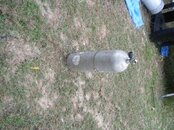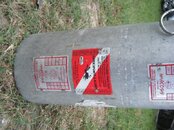Hey guys, I'm a new diver and I have recently bought all my gear brand new. (besides the tank) Recently I decided that diving a rental tank can be quite a pain in the butt because I have to worry about bringing it back on time and I have to fill out the paperwork and they take your credit card info in case you don't bring it back blah blah blah. While I understand it is economical unless you are diving a bit more I simply prefer to buy my own tank. This guy I know has retired from diving and I can pretty much get his tank for next to nothing cost wise. It needs to be hydro'd/inspected but it seems like a much cheaper solution than buying a new tank. I don't know what the numbers/letters on the tank are but judging from the markings I think its made in 1993. Would this be a good tank to get hydro'd/inspected? or do you think its no good? its in very good condition, the last inspection seems to be in 2005 but it has been stored with air still in it to prevent corrosion ect. To me it seems like a very valid option. Can anyone tell me what the markings on the top of the tank mean, who the manufacturer is, and if the year is really 1993? Thanks in advance for advice!
Here are some pictures to look at. Sorry I don't have anything better picture wise at the very moment. but i had seemed to get a good zoom-in from my computer if I click on the picture save it and then open it back up via windows photo gallery or something of that nature.

Here are some pictures to look at. Sorry I don't have anything better picture wise at the very moment. but i had seemed to get a good zoom-in from my computer if I click on the picture save it and then open it back up via windows photo gallery or something of that nature.






